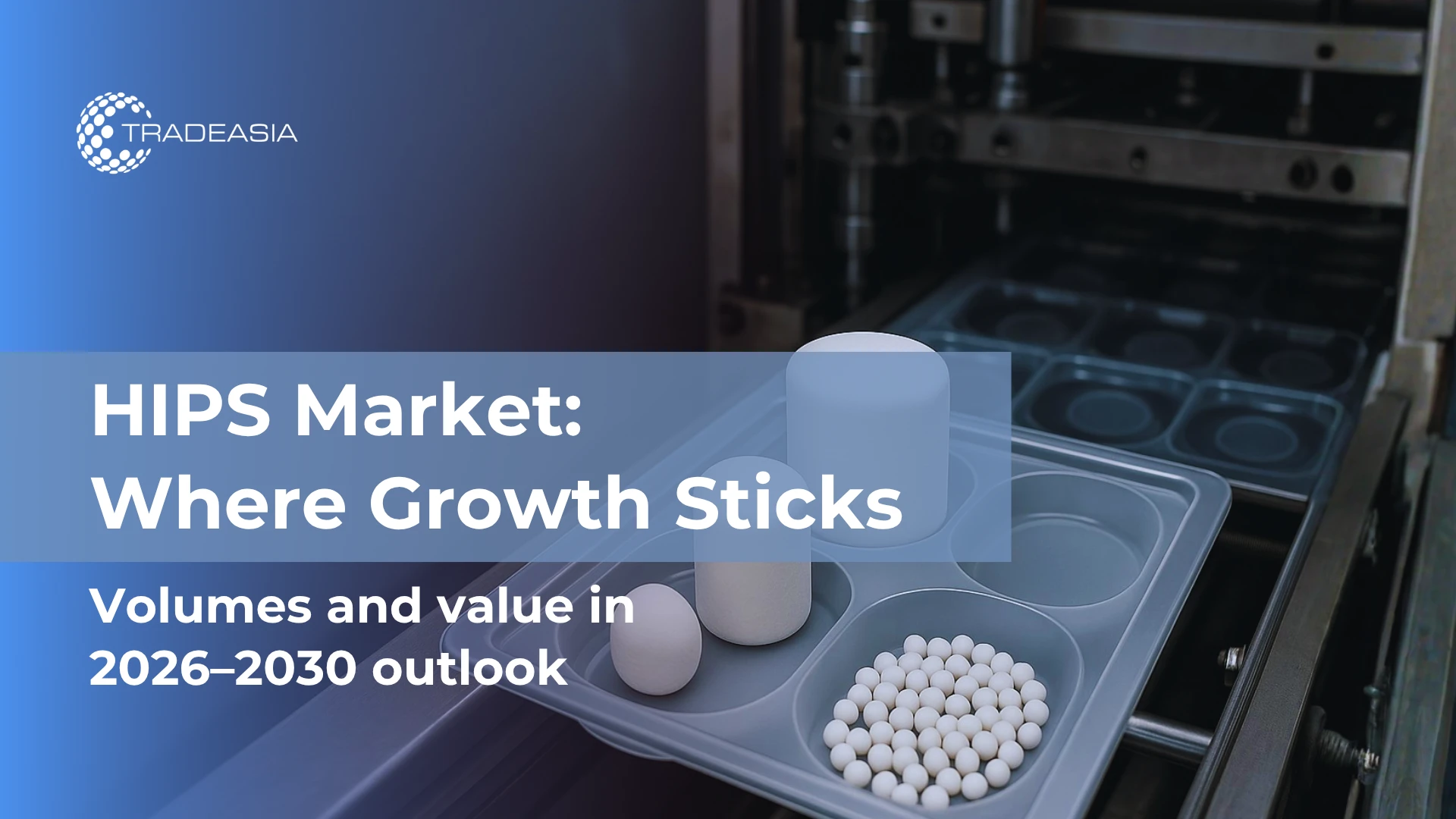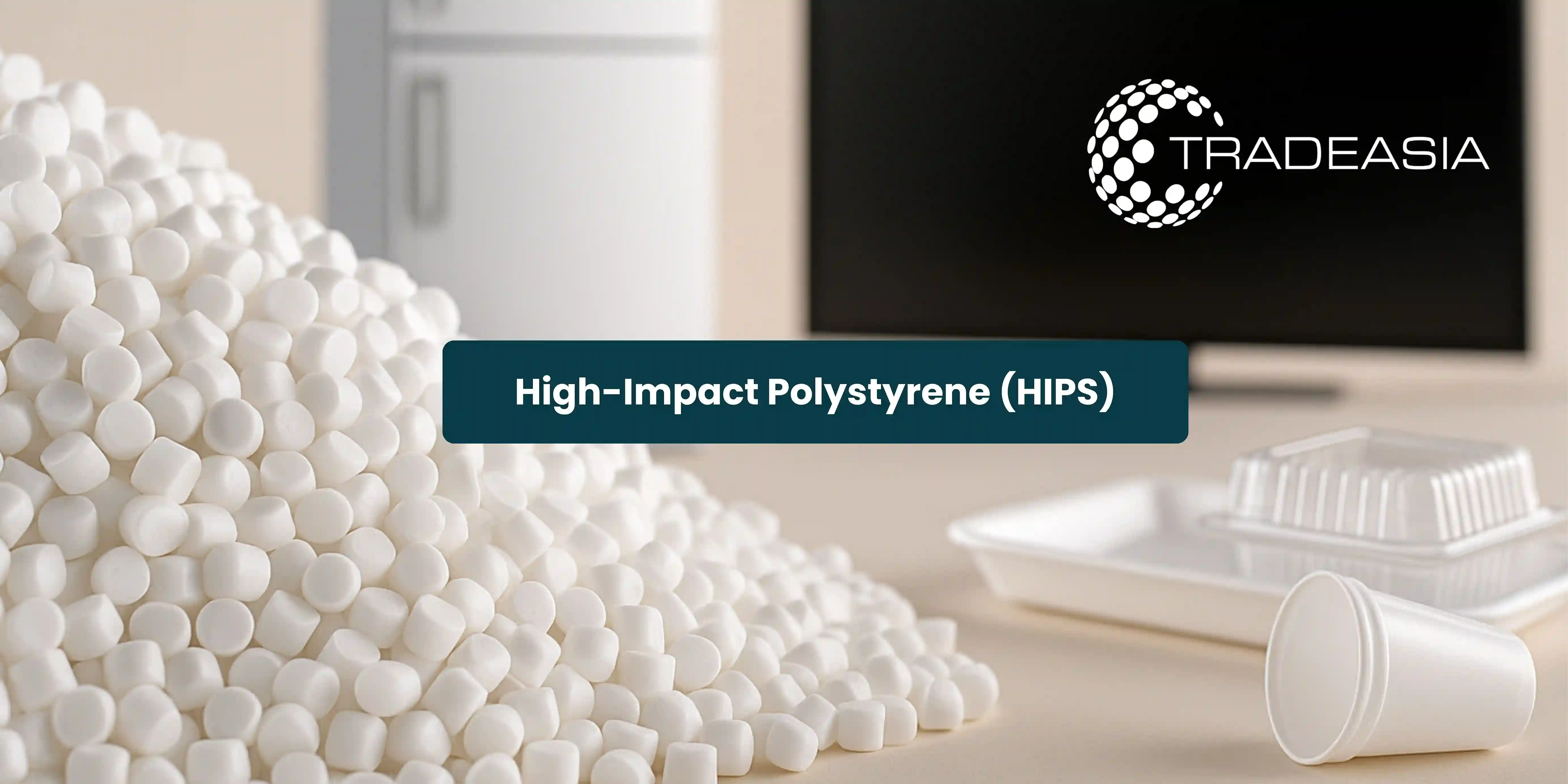HIPS 2026–2030: Packaging vs. Electronics—Where Growth Will Stick builds directly on our Aug 11 Market Insight, which covered HIPS fundamentals and global trends. If you need a refresher on properties, recyclability signals, and regional demand drivers, start here: Prospects of High-Impact Polystyrene (HIPS) in the Global Market 2025–2030. This follow-up will focused on end-market segmentation—what’s propelling packaging, where electronics will grow more selectively, and how procurement can secure specification stability across sites.
1. Introduction: Why a HIPS Five-Year View Matters
High Impact Polystyrene (HIPS) occupies a unique middle ground—tougher and more printable than GPPS, but more cost-efficient than ABS for many housings and rigid packs. From 2026–2030, that positioning will be tested by retail shifts, energy costs, and recyclability pressures. Decision-makers need a crisp read on HIPS for packaging and electronics to set procurement and tooling strategies. For a quick product orientation and grades, see HIPS from our product page.
Strategically, growth hinges on two levers: packaging volumes tied to FMCG and e-commerce, and electronics programs that favour cosmetic parts with moderate heat requirements. HIPS remains attractive where paintability, surface energy treatment, and printing quality matter. Styrenics property context and end-market narratives are summarized by PlasticsEurope.
In parallel, cost and availability track styrene and butadiene cycles. That volatility argues for dual-sourcing plans and documentation discipline. A partner who can ship to multiple plants and keep COA ranges tight will blunt the impact of price swings. Access Plastradeasia’s technical document page.
We’ll compare demand trajectories across packaging and electronics, explain the high impact polystyrene manufacturing process in buyer terms, and outline high impact polystyrene injection moulding windows that repeat across moulds and geographies. For the broader PS family, see: Polystyrene Resin product page.
2. Packaging: The Core Demand Engine for HIPS
Rigid packaging remains HIPS’s stronghold due to colourability, printability, and thermoforming response. Brand owners like the balance of stiffness, impact, and cosmetic control for disposable tubs, trays, and point-of-sale components. Design-for-decoration and adhesive compatibility keep HIPS competitive where branding is critical.
Growth vectors through 2030 include quick-service food packs, health/beauty fixtures, and retail display components that value high-gloss or easily textured surfaces. HIPS grades for extrusion/thermoforming deliver consistent gauge and rim strength, reducing rejects on fast lines.
Packaging also benefits from HIPS’s predictable colouring in masterbatch workflows. When paired with surface energy treatment (corona/flame), ink adhesion rises and print defects fall. Documentation of colour and gloss acceptance limits in COAs reduces disputes across converters and co-packers (standards references: ASTM methods library - ASTM B998).
Watch recyclability narratives. While PS streams are developing, mechanical and chemical routes are expanding in several regions. Buyers should capture design-for-recycling choices and supplier declarations in a central repository for tenders and audits.
3. Electronics: Selective Growth with Tighter Specs
Electronics growth is more selective: HIPS wins for cosmetic bezels, small appliance housings, and internal frames where heat loads are moderate. Its paintability and texture control allow premium aesthetics without the cost of higher-heat resins. Where ESD or FR is needed, compounded HIPS variants can meet targets—document test regimes up front.
Program risks include colour consistency and weld-line visibility on large shells. Gate design, melt control, and mould temperature tuning stabilize the look; the right grade/MFR narrows cycle variability. For spec alignment, keep ASTM D1238 (MFR) and impact/strength methods in your SOPs (methods library: ASTM D1238).
Electronics buyers increasingly demand traceability and change-control notices for additives and pigments. Cross-plant replication (golden runs, set-point sheets, part weights) cuts launch risk. If higher heat or UL ratings push beyond HIPS’s comfort zone, consider tiered material matrices. However, for decorative covers and non-load parts, HIPS’s cost-to-appearance ratio remains hard to beat.
4. High Impact Polystyrene Manufacturing Process—Buyer’s View
The high impact polystyrene manufacturing process grafts rubber (polybutadiene) into a polystyrene matrix via mass/bulk polymerization, forming rubber domains that deflect cracks and boost toughness. Rubber particle size and distribution trade impact against gloss/flow; producers tune these through process conditions.
Additive packages (stabilizers, pigments, antistats) determine opticals and handling. For food-adjacent packs, manufacturers provide migration/composition statements; align your acceptance limits with recognized methods to keep audits clean (ISO/TC 256).
Commercially, buyers should focus on MFR windows, impact tiers, and colour masterbatch compatibility. Tight lot-to-lot bands reduce changeover scrap when running multiple tools. Always request COA per lot and check that test methods are specified—not just values.
When consolidating SKUs across plants, align on spec bands and change-control protocols. The payoff is faster approvals and fewer surprises in multi-cavity moulds and thermoform tools.
5. High Impact Polystyrene Injection Moulding—Windows That Scale
High impact polystyrene injection moulding typically runs at melt ~200–240 °C (grade/tool dependent). Moderate injection pressures and controlled mould temperatures yield short cycles and stable cosmetic surfaces. Use ASTM D1238 to monitor MFR drifts that affect fill/packing consistency.
Gate and runner choices shape weld lines and impact retention. Fan/film gates on large panels can lift surface quality; small cosmetic parts may prefer sub-gates to speed degating. Maintain five levers—melt, mould, injection speed, holding, cooling—to stabilize parts across machines.
Colour integrity depends on masterbatch base and shear history. Pair HIPS-compatible carriers with sensible screw design to avoid plate-out and gloss loss. For packaging parts that are printed or labelled, keep surface energy targets documented to minimize rework.
6. Trade Reality: High Impact Polystyrene HS Code & Regional Sourcing
The high impact polystyrene HS code sits within HS 3903 (polymers of styrene). Many markets classify HIPS under 3903.90 (“other”), but importers must confirm local subheadings and duties; see the US HTS for structure and examples: USITC 3903.90
Regional demand will stay Asia-centric for consumer goods and packaging, with EMEA/Americas steady in FMCG and small appliances. Freight normalization should help inventories, but energy differentials and FX add spread to delivered costs—another reason to pre-qualify alternates.
Where regulations reference food-contact, align documents to local frameworks and customer expectations. Retain migration/organoleptic statements and keep additive declarations current. To buffer volatility, build dual-source coverage and define safety-stock bands by site. A supplier with multi-region logistics and lot traceability protects service levels when feedstock or freight tightens.
7. Working With a HIPS Resin Supplier—Docs, Data, and Risk Control
A dependable HIPS resin supplier delivers tight COA ranges (MFR, impact, colour), rapid document turnaround, and clear change-control. This speeds customer approvals and reduces scrap from property drift.
Traceability should connect lot → pallet → shipment → plant run. When issues arise (black specks, gloss dips), data-driven investigations resolve faster. Keep a shared evidence library—TDS, COAs, letters, and photos of golden parts—here.
For packaging and electronics, create a material matrix that maps impact/flow tiers and colour routes per part family. That lets S&OP switch grades during tight supply without derailing quality. For broader PS choices and blends, reference: Polystryne Resin product page.
8. Conclusion: Where Growth Will Stick (and How to Capture It)
Through 2030, packaging will remain HIPS’s base load—colourable, printable, and fast to decorate. Electronics will add selective growth where cosmetics matter more than elevated heat. Both segments reward suppliers who deliver stable specs and audit-ready documentation.
To capture that growth, manage the manufacturing process variables that matter (rubber morphology, MFR, additives) and lock injection-moulding windows you can replicate across tools and plants. Shared method references (ASTM/ISO) keep quality talks objective.
Trade and compliance details—such as the HS code classification and food-adjacent documentation—must be accurate to avoid delays and customer pushback. Keep those files current and centrally accessible for tenders and audits from our technical product page.
If you’re planning trials or rolling up SKUs across regions, we can help with grade selection, samples, and supply options. Start the conversation: Contact Us




Leave a Comment